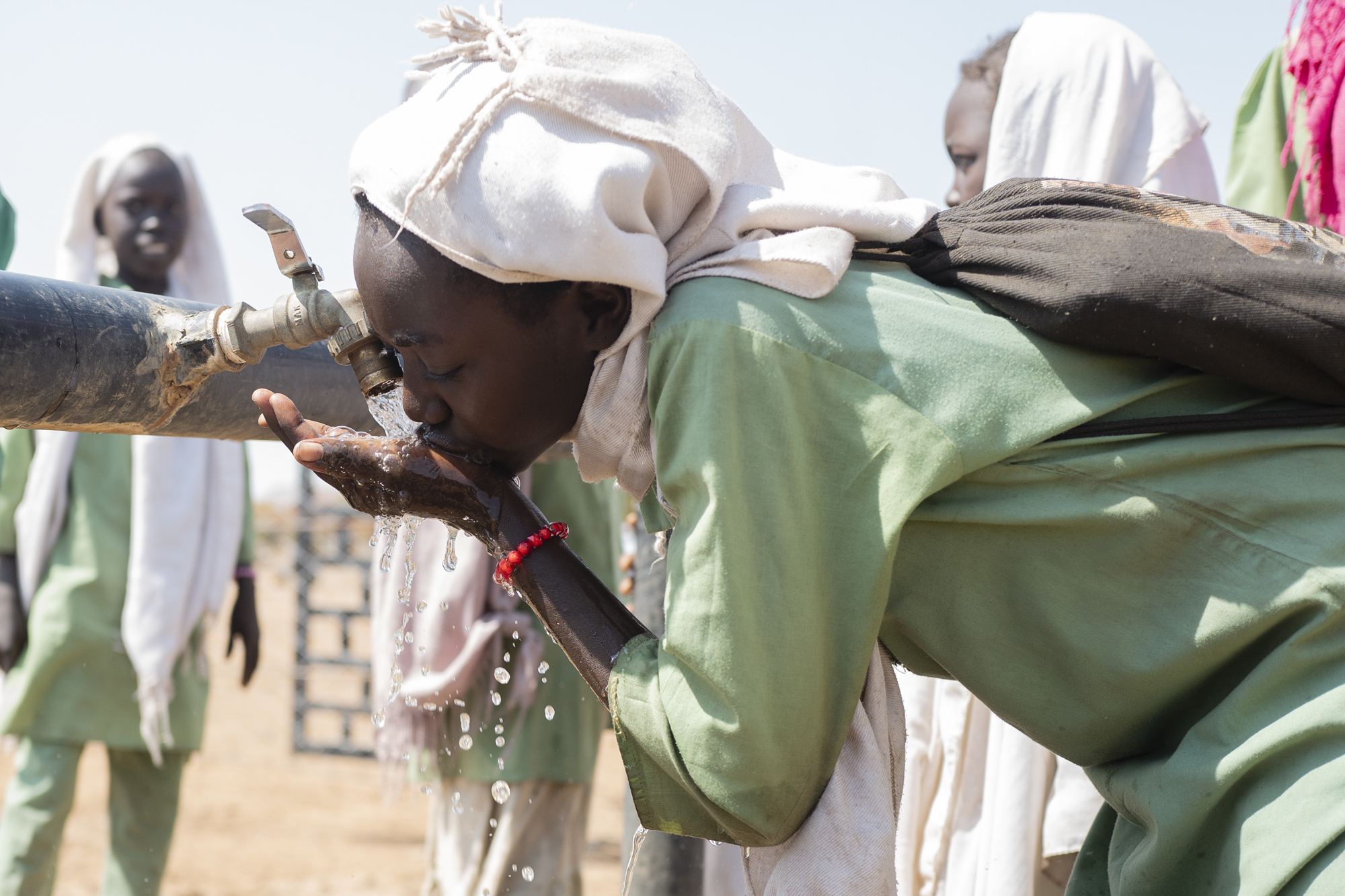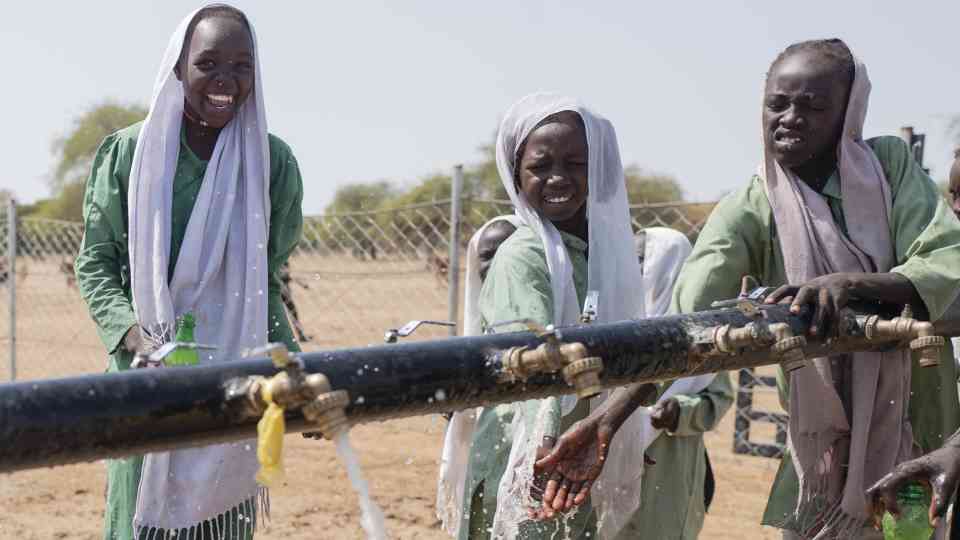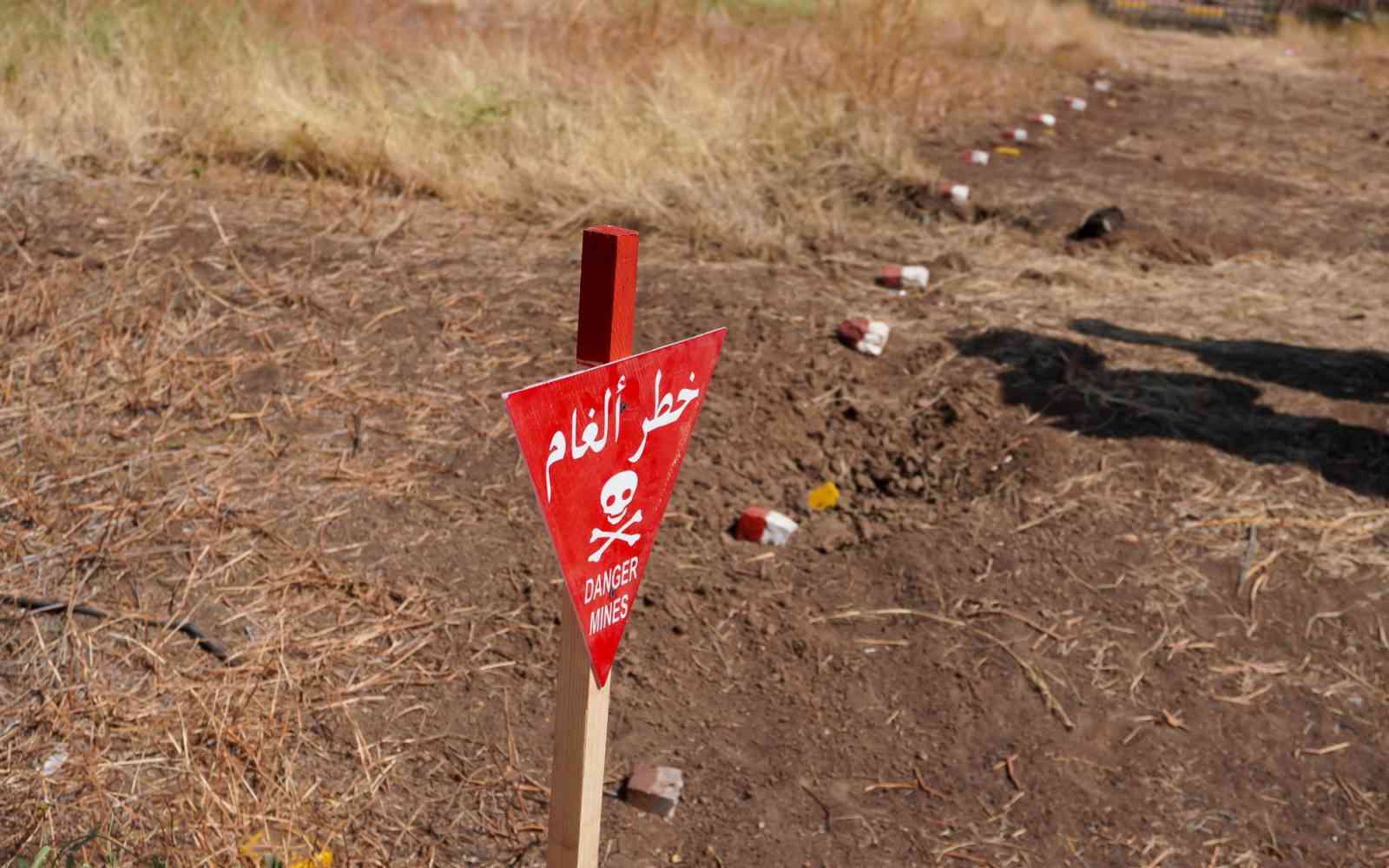The United Nations Office for Project Services (UNOPS)

Rehabilitating East Darfur’s gum arabic belt
For many years, one of Sudan’s most important exports went into decline, but a new generation of farmers are returning to gum arabic production.
The gum arabic belt in Sudan stretches from the western border with Chad to the eastern border with Ethiopia and covers an area of roughly 500,000 square kilometres. The country is the world’s biggest exporter of gum arabic, accounting for over 60 per cent of the global supply. A quarter of Sudan’s output comes from Darfur, where many livelihoods depend on the important cash crop.
The natural gum comes from the acacia senegal tree, which is known locally as hashab. “For us, the hashab tree is a friendly tree. It’s the essence of community life because all the components of the community can be found in this tree,” says Esam Essa Abdelrhman, a gum arabic farmer from Om-Oshosh village in the Aljalabi area of East Darfur’s Ed Daein locality.
For Esam and his community, the tree has many purposes. Not only does it provide shade from the scorching sun, the gum it produces can provide a good source of income for those who farm it. It is also used locally as a medicine to treat kidney and stomach problems, often caused by drinking contaminated water. When the tree is old, it is cut down and used for firewood and as timber to build houses. The trees also help keep the soil fertile and prevent erosion, acting as a barrier against the sands that blow over from the Saharan desert.


Over the years, however, arabic gum production became less popular among East Darfur’s farmers.
“Droughts that occurred in the 1980s and 1990s caused the arabic gum belt to deteriorate. Many farmers lost interest and moved to alternative livelihoods,” explains Abdurahim Arho, who has been working with ZOA – a relief and recovery organization – in East Darfur since 2008.
Harvesting gum is demanding work. Temperatures can soar to 45 degree Celcius and to stay hydrated workers need easy access to drinking water – which is often in short supply. Unstable market prices for gum arabic in the past also meant farmers did not always reap the rewards for their efforts, and many stopped valuing gum arabic as a viable source of income. Some turned instead to cutting down the trees to produce charcoal and firewood to make a living. In recent years, however, the prospects of arabic gum production have improved following the liberalization of the market in 2009.
A promising future
As part of ongoing efforts to rehabilitate the hashab forests and encourage farmers to return to gum arabic production, Abdurahim has been part of a project to train farmers on the cultivation and conservation of the trees, which is helping restore trust in the crop as a worthy investment.
The training has helped raise awareness on the environmental consequences of over felling and the dangers of practices such as cutting off large branches to use as fuel, which can leave trees vulnerable to pests like locusts and termites, reducing the gum yield. Farmers also learn how to monitor climatic changes that can affect the time when preparing the trees for harvest should begin.
The training provided a great addition to the knowledge we already had, particularly in regard to the tapping process and when to harvest.
Knowing when to start preparation can be difficult as the climate is susceptible to change and it may be necessary to delay harvest to ensure a worthwhile yield. A process known as ‘tapping’ is usually carried out at the start of the dry season. Incisions are made into the branches of the tree, in which gum starts to collect after around 30 days. It is then extracted at various intervals in the following months.
In Om-Oshosh, farmers typically begin the tapping process at the end of October, but due to unusually cold temperatures and a heavier rainy season in 2019, the trees were not ready to be harvested. “If we had started tapping then, the season would have failed,” explains Esam.
A new generation
Almost 300 farmers like Esam have received training on arabic gum production and forest conservation as part of a wider project to improve natural resource management in the state of East Darfur. Through the initiative, a marketing loan system was set up to provide temporary finance solutions to gum arabic producers to allow them to wait for more favourable market prices before selling their produce. New storage facilities constructed in three localities are helping provide a safe place for farmers to store the arabic gum after it has been harvested.

To improve the availability of clean drinking water for workers during harvest season, farmers received 60 donkey carts with water tanks, which enable the essential commodity to be transported easily to locations that are far from water distribution points.
A total of 65,000 seedlings were planted and over 200 kilograms of seeds were sown to promote greener coverage and help restore the area’s hashab forests.
About this project
By improving the way resources are managed, the Natural Resource Management Project aimed to improve livelihoods and alleviate poverty in conflict-affected communities of East Darfur. The project sought to mitigate the potential for violence and improve living conditions by addressing three key areas: access to water, environmental policy and livelihoods.
Funded by the European Union, the project was implemented in two phases in partnership with United Nations Environment Programme (UNEP) and ZOA (an international relief and recovery organization), together with local partners, participating communities, customary institutions and the government.
UNOPS was the lead implementing agency for the project and was also responsible for constructing nine water yards. UNEP helped implement policies to guide the use of natural resources. ZOA, together with local partners, worked on capacity building to improve livelihoods and promote the use of more sustainable techniques for using natural resources.
The project has benefited more than 9,000 households in nine localities across the East Darfur State and has helped shape new legislation for natural resource management. The ‘Council Act for Coordination and Management of Natural Resource Policies for East Darfur State’ (2018), is the first of its kind in Sudan and provides a framework for the shared management of resources by both the state government and local communities.














